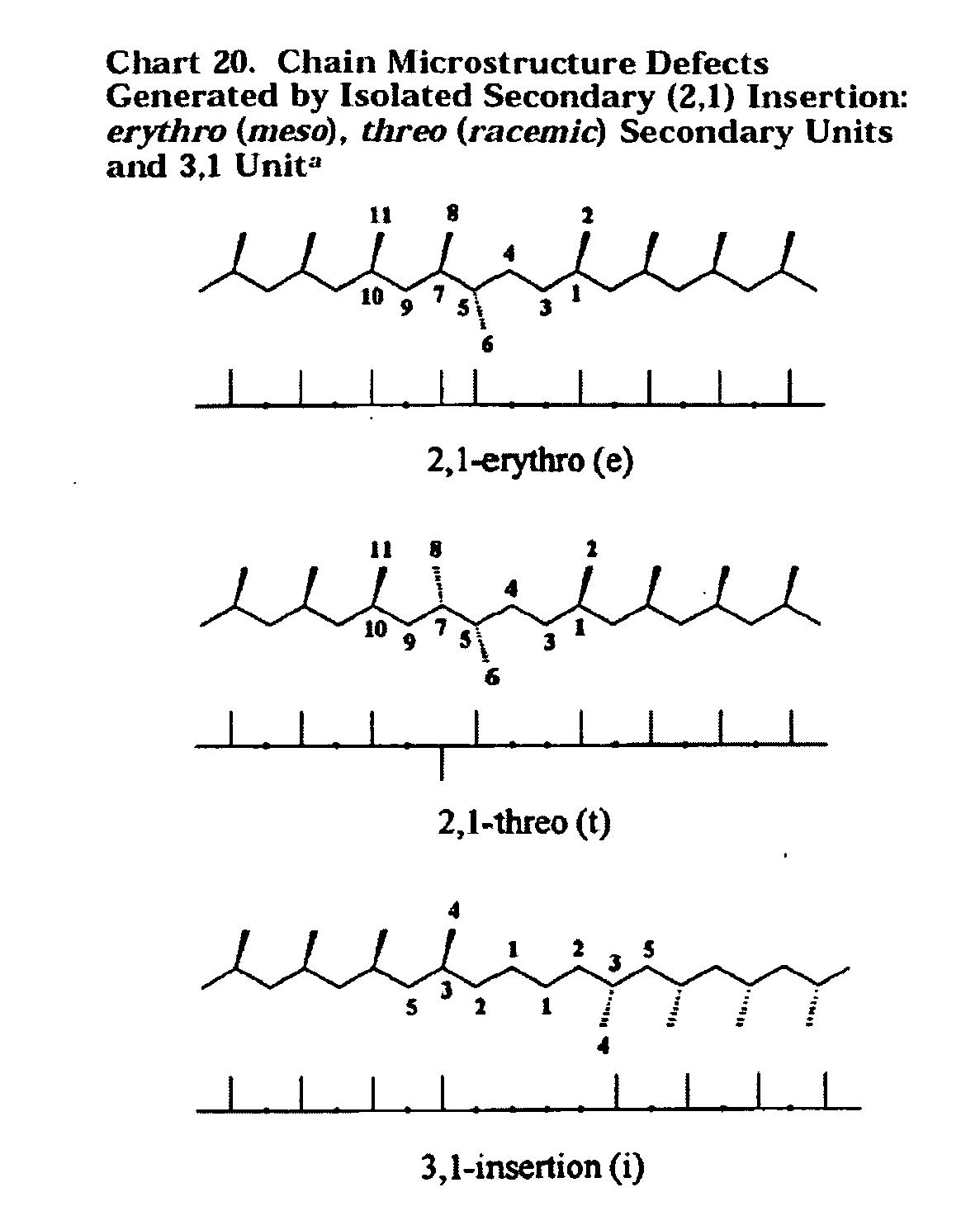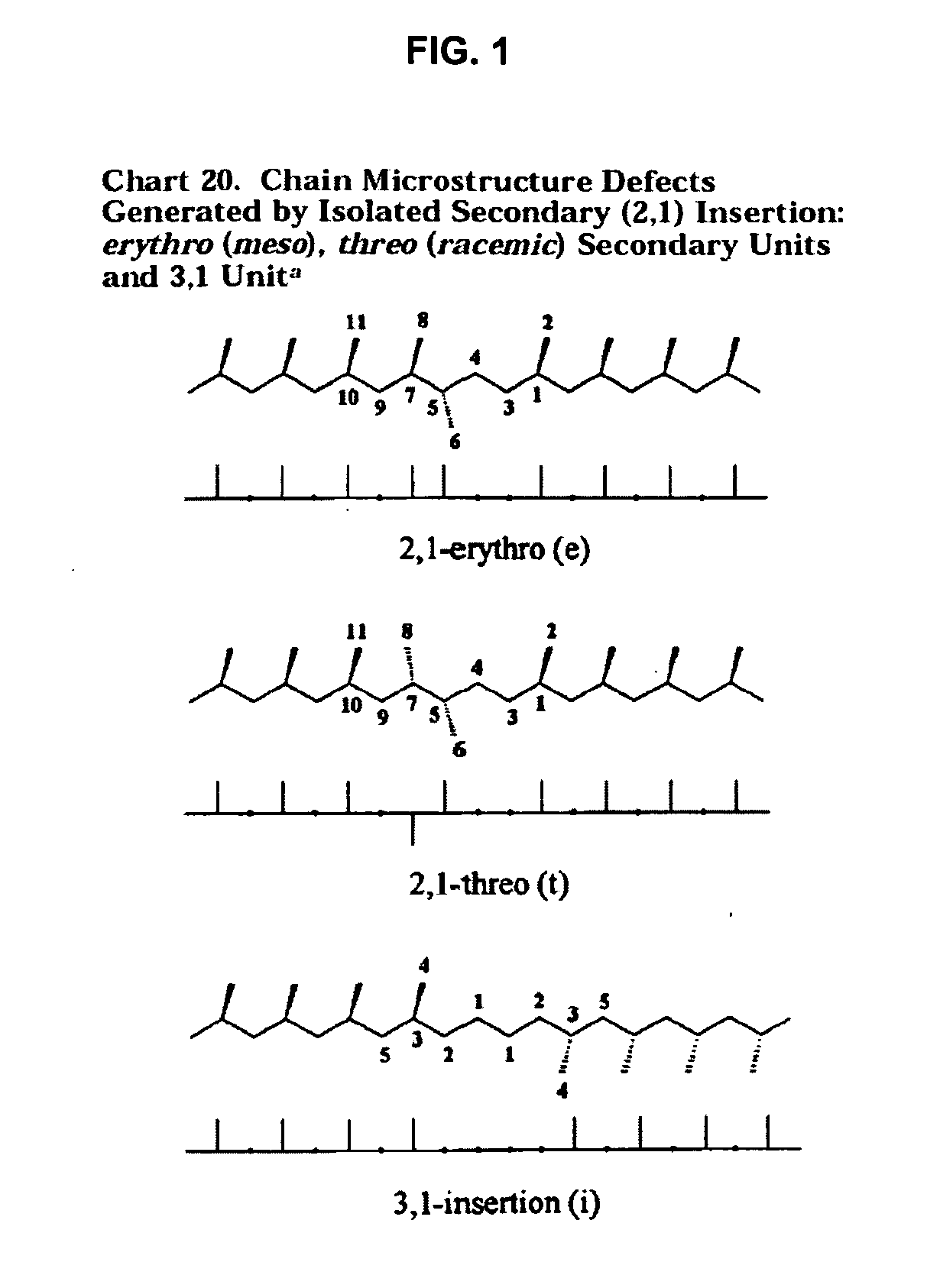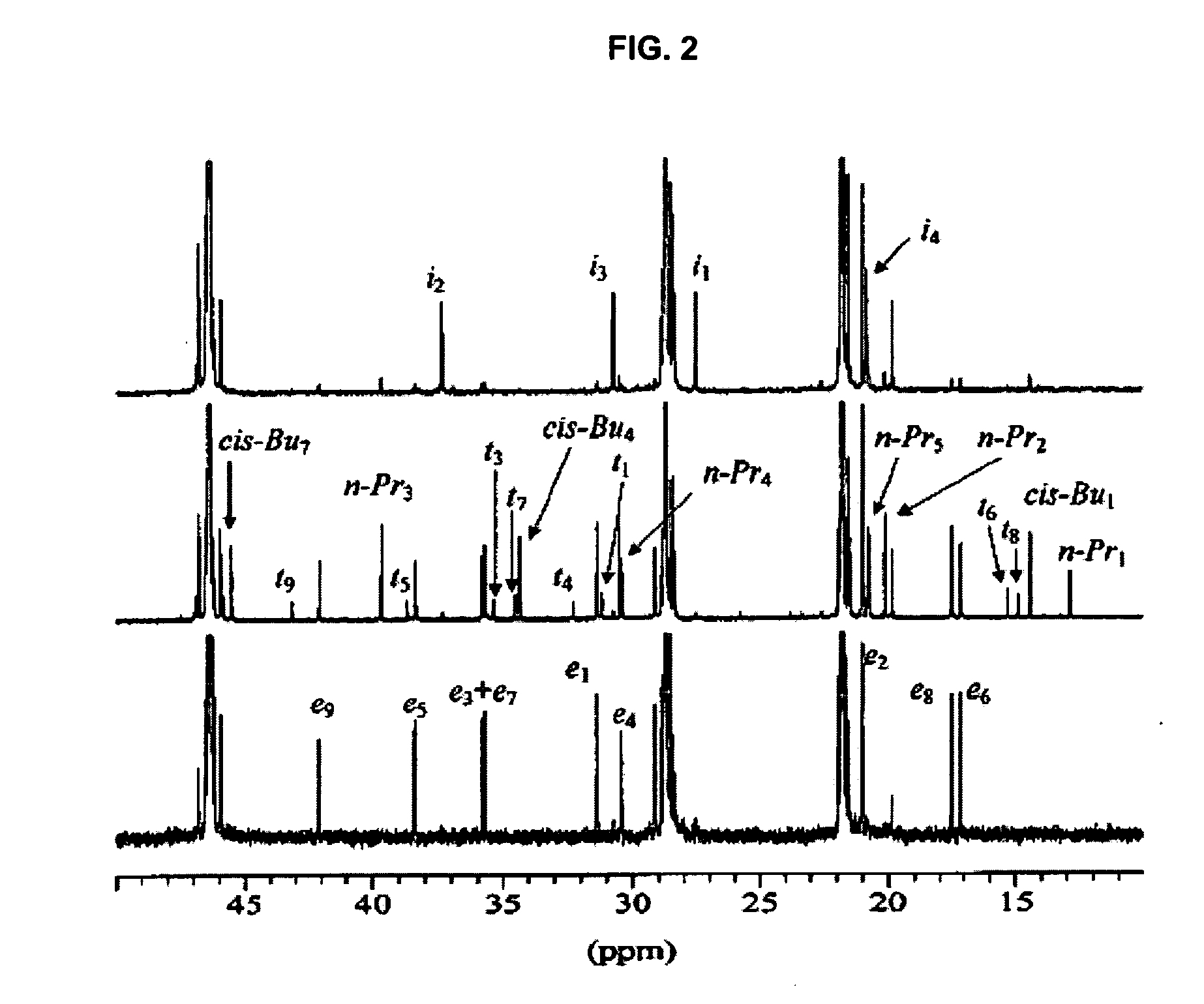Polymer production at supercritical conditions
a technology of olefin monomer and polymerization, which is applied in the direction of catalyst activation/preparation, chemical/physical processes, bulk chemical production, etc., can solve the problems of difficult comparison between catalysts, inability to specifically disclose bulk propylene polymerization using soluble metallocene catalysts, and inability to meet the requirements of high pressure conditions
- Summary
- Abstract
- Description
- Claims
- Application Information
AI Technical Summary
Benefits of technology
Problems solved by technology
Method used
Image
Examples
examples
Size-Exclusion Chromatography of Polymers
[0615] Molecular weight distribution (Mw / Mn) was characterized using Size-Exclusion Chromatography (SEC). Molecular weight (weight-average molecular weight, Mw, number-average molecular weight, Mn, and z-average molecular weight, Mz) were determined using a High Temperature Size Exclusion Chromatograph (either from Waters Corporation or Polymer Laboratories), equipped with a differential refractive index detector (DRI), an online light scattering detector, and a viscometer. Experimental details not described below, including how the detectors were calibrated, are described in: T. Sun, P. Brant, R. R. Chance, and W. W. Graessley, Macromolecules, Vol. 34, No. 19, pp. 6812-6820, (2001).
[0616] Three Polymer Laboratories PLgel 10 mm Mixed-B columns were used. The nominal flow rate was 0.5 cm3 / min, and the nominal injection volume was 300 microliters. The various transfer lines, columns and differential refractometer (the DRI detector) were cont...
PUM
| Property | Measurement | Unit |
|---|---|---|
| cloud point pressure | aaaaa | aaaaa |
| cloud point pressure | aaaaa | aaaaa |
| weight % | aaaaa | aaaaa |
Abstract
Description
Claims
Application Information
 Login to View More
Login to View More - R&D
- Intellectual Property
- Life Sciences
- Materials
- Tech Scout
- Unparalleled Data Quality
- Higher Quality Content
- 60% Fewer Hallucinations
Browse by: Latest US Patents, China's latest patents, Technical Efficacy Thesaurus, Application Domain, Technology Topic, Popular Technical Reports.
© 2025 PatSnap. All rights reserved.Legal|Privacy policy|Modern Slavery Act Transparency Statement|Sitemap|About US| Contact US: help@patsnap.com



